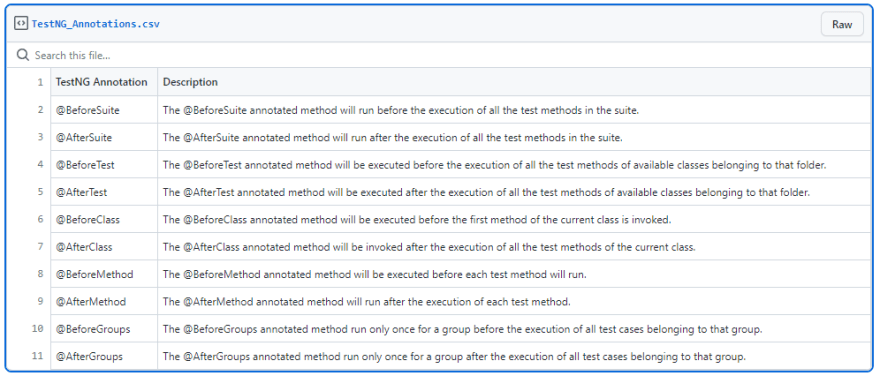What is a Testing Framework?
A testing framework is a set of guidelines or rules used for creating and designing test cases. A framework is comprised of a combination of practices and tools that are designed to help QA professionals test more efficiently.
Popular available options:
- JUnit
- NUnit
- TestNG
Why TestNG?
TestNG is a testing framework inspired by JUnit and NUnit but introduces some new functionalities that make it more powerful and easier to use, such as:
- Annotations.
- Run your tests in arbitrarily big thread pools with various policies available (all methods in their thread, one thread per test class, etc…).
- Test that your code is multithread safe.
- Flexible test configuration.
- Support for data-driven testing (with @DataProvider).
- Support for parameters.
- Powerful execution model (no more TestSuite).
- Supported by a variety of tools and plug-ins (Eclipse, IDEA, Maven, etc…).
- Embeds BeanShell for further flexibility.
- Default JDK functions for runtime and logging (no dependencies).
- Dependent methods for application server testing. TestNG is designed to cover all categories of tests: unit, functional, end-to-end, integration, etc…
Annotations in TestNG
Assertions
Assertions in TestNG are a way to verify that the expected result and the actual result match or not.
- Expected Result: expected outcome at a point in time while testing application.
- Actual Result: actual outcome at a point in time while testing application.
example:
Assert.assertEquals(actualOutcome,expectedOutcome);
Types Of Assertions
Hard Assertion: Hard Asserts are those asserts that stop the test execution when an assert statement fails, and the subsequent assert statements are therefore not validated.
Soft Assertions: In soft asserts, the subsequent assertions keep on running even though one assert validation fails, i.e., the test execution does not stop.
Example:
# Hard Assert
Assert.assertEquals(actualResult,expectedResult);
# Soft Assert
SoftAssert softassert = new SoftAssert();
softassert.assertEquals(actualResult, expecetedResult);
softassert.assertAll();
Example Usage
pom.xml
<dependency>
<groupId>org.testng</groupId>
<artifactId>testng</artifactId>
<version>7.5</version>
</dependency>
code
only @test annotated methods are called test should hold test scripts, whereas @BeforeMethod/@AfterMethod methods should be used for setting up prerequisites & cleaning up for each tests.
import org.testng.annotations.AfterTest;
import org.testng.annotations.BeforeTest;
import org.testng.annotations.Test;
public class Runner {
@BeforeTest
public void beforeTest(){
System.out.println("method to be executed before test");
}
@Test
public void test(){
System.out.println("test method");
}
@AfterTest
public void afterTest(){
System.out.println("method to be executed after test");
}
}
output:
method to be executed before test
test method
method to be executed after test
===============================================
Default Suite
Total tests run: 1, Passes: 1, Failures: 0, Skips: 0
===============================================




Top comments (0)